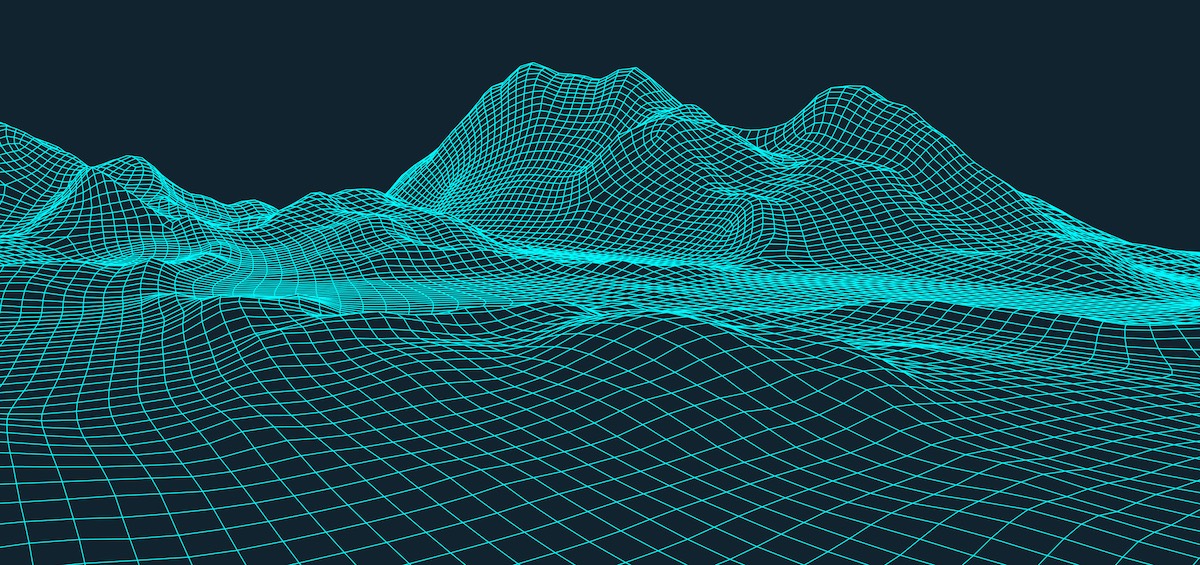
What is geographic mapping technology?
Geographic mapping technology is made up of tools, techniques and systems to gather, analyze, store, manipulate, and display geographic or spatial data.
This technology uses satellites, high-tech cameras and computer software to gather data and create maps.
Geographic mapping helps us understand and visualize information about places on the Earth’s surface. It can also help track the movement of vehicles or animals or even monitor environmental changes.
Overview of the different types of mapping systems:
- Geographic Information Systems (GIS): GIS is a computer-based mapping system that is especially helpful for visualizing data. With GIS, users can overlay multiple layers of information on a map, perform spatial analysis and use that to gain meaningful insights. This technology is widely used in fields like urban planning, environmental management and emergency response.
- Global Positioning System (GPS): GPS technology uses satellites to accurately determine the exact locations of objects on the Earth’s surface. It provides precise location data that can be used for mapping, navigation, and tracking. GPS technology is commonly used in consumer navigation systems, allowing users to find their precise location and receive turn-by-turn directions
- Remote Sensing: Remote sensing gathers information on the Earth’s surface using sensors on planes or satellites. It allows for capturing images, elevation data, and other geospatial information that can be used for mapping and monitoring environmental changes.
- LiDAR (Light Detection and Ranging): LiDAR technology uses lasers to measure distances and create precise 3D representations of the Earth’s surface. It is commonly used for creating digital elevation models and terrain maps.
How has technology advanced to create more accurate maps?
There are many ways technology has improved to create better, more accurate maps. For example, LiDAR allows for detailed 3D models of landscapes, buildings, and objects. GPS has reduced errors and inaccuracies common in older mapping methods, such as manual surveying.
With better satellite imagery and aerial photography, we can see smaller features like buildings, roads and natural features with greater clarity. This creates more accurate maps, which helps us, as consumers or as commercial entities, navigate and explore our surroundings more effectively.
While maps were once a fixed point captured in time, today’s mapping technology can provide dynamic and up-to-date information with live traffic conditions, road closures, weather conditions, and other details.
Improved battery technology and geographic mapping technology intersect in applications like mobile devices, electric vehicles, drones, and environmental monitoring. And here is where battery advancements can contribute greatly to the effectiveness, endurance and reliability of mapping technology overall.
Advantages and benefits of geo-mapping
Benefits of geo-mapping in government
Governments can use geo-mapping to analyze and visualize data sets, like population demographics, land use, infrastructure and natural resources. This helps governments at all levels make informed decisions and develop effective strategies for urban planning, resource allocation, disaster management and public service delivery.
In addition, geo-mapping ensures governments and media can quickly identify impacted areas, allocate resources and coordinate their response if there are emergencies like natural disasters or public health crises, such as these geo-mapped visuals of the Lahaina wildfires in the New York Times.
Critical infrastructure, evacuation routes, vulnerable populations and other key information are available via accurate, precise mapping, allowing for a more efficient response.
Geo-mapping can also help governments be proactive in some of these areas too. For example, natural disasters may be mitigated by mapping, with the opportunity to monitor and manage natural resources and conservation efforts (PDF).
Benefits and application for various industries and everyday life
Countless industries benefit from geo-mapping.
Transportation and navigation are heavily reliant on accurate, quality geo-mapping. Whether businesses are planning routes or people are navigating through traffic, navigation systems rely on mapping to calculate the most efficient routes and optimize travel times, helping drivers reach their destinations quickly and safely. Delivery companies can do the same and provide accurate delivery estimates to ensure faster and more reliable customer deliveries.
Additionally, mapping provides interactive and detailed location information in real estate, property management, and agriculture, allowing for better property research and site selection.
Tourism and recreation benefit from geo-mapping on both the industry and the consumer side. Mapping, with the ability to explore new destinations in advance and find attractions and points of interest, enhances the travel experience while keeping tourists safe and entertained.
Geo-mapping ultimately improves decision-making, convenience, and efficiency in multiple aspects of our lives.
How do 5G networks impact geographic mapping?
5G networks allow for faster data transfer, which means quicker transmission of geospatial data.
This includes high-resolution maps, satellite imagery, and 3D models, allowing for more immediate updates to mapping, real-time information, and data integration from various sources.
These networks also offer improved connectivity, so people, businesses, and governments relying on geo-mapping can access the information they need without delay.
What challenges remain with current geographic mapping technologies?
Accuracy of GPS coordinates
GPS signals can be disrupted or weakened by things like tall buildings and dense vegetation. GPS signals can also bounce off surfaces before reaching the receiver, and the Earth’s atmosphere can even introduce errors in GPS measurements.
Satellite geometry, or the arrangement of GPS satellites in the sky, is another concern — when satellites are clustered in one area, it can impact accuracy.
Differential GPS is one solution, comparing received GPS signals with known precise locations to correct errors. Assisted GPS uses more data, like cell tower information, to help with positioning calculations. Finally, many of today’s modern GPS receivers can access signals from multiple satellite constellations.
Mapping data overlaps and failures
Overlaps between mapping datasets can occur when there is a lack of coordination or integration among different organizations or sources. This can lead to duplicate features or conflicting attributes in overlapping areas.
Data failures, like incomplete, outdated, or erroneous mapping data, can also arise for various reasons, including limited data collection resources or human errors during data processing.
To properly integrate mapping datasets, it’s essential to identify overlaps, resolve conflicts and ensure consistency across multiple sources. Implementing data quality control measures, such as data validation and verification, can help identify and fix errors before finalizing maps.
Standardizing data formats and sharing best practices can also enhance data quality and reduce duplication of efforts.
In addition, regular updates and maintenance of mapping datasets are essential to ensure their accuracy over time.
Collecting real-time or near real-time data through various mechanisms, such as crowdsourcing or IoT sensors, can help keep maps up to date and prevent outdated or inaccurate representations.
Challenges with updating regional maps
Creating regional maps accurately representing a wide range of features, from large-scale infrastructure to small-scale details, is a balancing act.
Updating regional maps also requires adequate resources, including skilled personnel, technology and financial investment.
Small or underfunded organizations may face limitations, and collaboration and coordination among multiple stakeholders, including government agencies, private organizations and local communities, can also present challenges.
Effective communication and cooperation are crucial to obtaining relevant and accurate information for map updates.
Inadequate coverage of remote areas
Remote areas, often found in geographically challenging or sparsely populated regions, can have limited mapping coverage.
There is often a lack of sufficient data collection efforts compared to more populated or easily accessible areas, with logistical and financial obstacles resulting in a deficiency of high-quality data sources like detailed satellite imagery, aerial surveys, or ground-based measurements.
Limited or underdeveloped infrastructure, including communication networks and transportation systems, further complicates mapping efforts. Inadequate internet connectivity and transportation infrastructure hinder the efficient collection, processing and dissemination of mapping data.
Specialized equipment and techniques such as drones, remote sensing technologies or ground surveys may be necessary to obtain accurate mapping data. However, these methods can be costly, time-consuming and logistically demanding.
Mapping efforts frequently concentrate on urban centers or economically significant areas, leaving remote regions with inadequate coverage. This lack of prioritization further widens the mapping data gap in remote areas.
Issues with identifying unnamed roads and trails
Undocumented roads and trails may have developed naturally or been utilized by local communities without formal recognition. The lack of official records makes identifying and mapping these routes challenging. Mapping sources like satellite imagery or government databases may only sometimes include information about these unnamed roads. This is due to a focus on significant roadways and established routes at the expense of lesser-known ones.
In addition, the available data may be outdated, further complicating the process of mapping these routes.
Verifying the existence and accuracy of unnamed roads and trails can be problematic. Field surveys or on-site visits may be required to confirm their presence and condition. However, these efforts are often time-consuming, costly and logistically challenging, especially in remote locations.
That said, analyzing satellite imagery for visual cues, such as worn paths or unique features, may provide insights into potential roads or trails that require mapping.
What are the latest trends and developments?
How are AI technologies changing geo-mapping?
AI technologies are revolutionizing geo-mapping by automating processes, improving accuracy, enabling real-time monitoring, and enhancing the integration and analysis of diverse data sources.
Automated feature extraction is one example through which AI algorithms analyze large volumes of geospatial data to automatically identify features like roads, buildings, bodies of water and landmarks.
Image recognition and object classification also add to the accuracy and detail within geo-mapping.
AI algorithms can be used for change detection and subsequent updates, comparing historical data to current information to identify changes in the landscape.
When it comes to drones and autonomous vehicles, it’s AI behind the scenes, pressing sensor data to create real-time maps while positioning the vehicle within its surroundings.
How are cloud-based systems transforming it?
Cloud-based systems provide scalability, allowing mapping processes to handle large volumes of data and complex computational tasks. With cloud infrastructure, mapping applications can scale up or down based on demand, ensuring efficient processing and analysis of geospatial data.
With data integration being a noted challenge, cloud-based systems can help solve that problem through collaborative, centralized data management.
Multiple users from various locations or organizations can simultaneously work on the same dataset with access to real-time information. Also, cloud-based systems are accessible anywhere, so users can work with the tools they need, whether in the field or a lab.
What can we expect from geo-mapping in the future?
Along with even greater accuracy and precision and an increased focus on real-time, dynamic mapping, be on the lookout for enhanced integration with augmented reality (AR).
AR technologies will overlay digital mapping information onto the real-world environment, improving navigation, exploration, and understanding of spatial data. You may already recognize this from today’s technology, like Google Maps Live View, which allows users to hold up their smartphones and see virtual indicators over the camera view.
Advances in battery technology, particularly in energy density, will aid in developing more compact, lightweight mapping devices. This would allow professionals to carry portable mapping equipment with longer-lasting batteries, enhancing mobility and productivity.
It will also allow for extended operation for geo-mapping devices, particularly in areas that require continuous collection over long periods. For example, aerial mapping with drones or other autonomous vehicles will improve with longer battery life, enabling more extensive coverage and data collection with fewer interruptions.
How will it impact our daily lives?
Improved technology means improved maps — and that means improved navigation, exploration, travel, and commuting. It also means enhanced public safety and more reliable emergency response if that is required.
Improved mapping technology means urban planners can make informed decisions for efficient city development. This can lead to improved urban environments, better transportation systems, and enhanced quality of life for residents.
Ultimately, better and more energy-dense batteries provide the reliability and longevity required for mapping applications, enabling us to navigate, explore and engage with our surroundings more effectively and conveniently.
